History
The origination of the Selkirk Rex is one of pure chance. Upon the birth of a litter of kittens taking refuge in an animal shelter in the late nineteen eighties, a shelter worker observed that one of the kittens had a distinctively, poodle like coat.
Falling in love with this curly haired marvel, she then bred that kitten with a Persian, resulting in three curly haired and three normal hairedkittens. The breeder then decided to give them the name Selkirk Rex which was from the name of the mountains that were near her home.
Since the three curly haired kittens contained the Rex gene, it is dominant. This means that any out-crossing with other varieties of cat breeds still produces the Selkirk Rex. This breed of cat is available in several different colors and patterns and also comes in a longhaired version and a shorthaired version.
Appearance and Grooming
The physical characteristics of a Selkirk Rex includes a body that is muscular and slightly square, a rounded head, round eyes and pointed ears that are set wide apart and a tail that tapers gracefully at the tip. Another unique physical trait this breed displays are its brilliant gold colored eyes. However, there are on occasion, blue eyed cats as well.
With the Selkirk being bred back to the Persian breed for purposes of creating a healthier and sturdier breed, it only stands to reason that this beautiful, curly haired marvel would require some extensive grooming. Both the shorthair and the longhair require a brushing routine of several times a week in order to prevent tangles and gnarls.
This breed also has a tendency to shed quite frequently, so grooming helps alleviate loose hairs that may have ended up on your furniture or in your cat’s stomach. It is important to note, that you must be extremely careful when grooming your Selkirk Rex as too much combing can result in the straightening of the beautiful plush curls. In addition, this breed has very fragile and delicate whiskers that can break rather easily, so take special care when grooming around that area.
Health Problems
The Selkirk Rex is a very healthy breed and does not seem to be prone to the more common Rex hereditary problems. However, as with any longhaired cat breed, this breed does have a tendency to succumb to hairballs. A consultation with your veterinarian will help you decide which specially formulated hairball prevention food is best for you and your cat.
Behavior and Characteristics
The Selkirk Rex is the perfect breed for anyone who spends a lot of time away from home. These cats are more than happy and willing to find ways to amuse themselves, but will definitely be ready and willing for affection and attention when their owners return home. The Selkirk Rex is also a perfect addition to family homes and homes with multiple cats. This breed has a laid back, relaxed attitude and is happy and content to indulge the imaginations of children and participate in dress up and tea party games.
Anyone who is thrilled with owning a unique looking cat who has a loving and tolerant personality, combined with a calm and relaxed attitude is sure to want to take a look at the plush and beautiful Selkirk Rex.
The Manx breed of cat has been around since before the seventeen hundreds and originated on the Isle of Man. When a cat lover hears the word “Cat”, they often envision a fluffily animal with a distinctively graceful tapering tail. However, what makes the Manx breed unique is that it is completely tailless.
Quite often, cat fanciers are able to come upon a variety of this breed called “Tailless, or Tailies.” While this variety holds the same characteristics as a Manx, it is highly affectionate and perfect as a family pet, however, the tailless Manx is the only breed recognized by cat associations for participation in the cat show ring.
Appearance
In addition to the uniqueness of having no tail, the Manx also displays another unusual physical characteristic. The Manx has back legs that are much longer than its front legs. When this unique creature is viewed walking, many comment that it resembles that of a bunny hop type motion. When this breed is in a sitting position, it holds its back legs bent sot that their backs remain in a fairly straight position.
Along with this odd physical trait, the Manx has a solidly built round body, which typically weighs in at a respectable eight to twelve pounds. With a wide and rounded head, the Manx also has very prominent cheeks, long ears, which are slightly rounded at the tip and gold or amber colored eyes. The Manx, in keeping with its distant descendant, the British Shorthair, is available in every color and pattern your heart could possibly desire.
Behavior and Characteristics
The Manx’s personality is one of a sweet-natured, fun-loving, playful cat who on occasion has his quiet unassuming moments. While this breed is happy to play with children, it also makes the perfect pet for anyone having a career that keeps them away from home for lengthy periods of time. Unlike other breeds, the Manx does not require the company of additional cats to keep it company.
Children often find the Manx to be a playful and endearing companion. Despite the unusual lengths of its legs, this breed of cat is able to leap higher than any other breed. Typically, an owner will discover that the Manx’s favorite perches include door frames, refrigerators and any other high obscure area they can get into. The Manx is also highly intelligent and has the ability to be taught tricks such as fetch, coming when his name is called along with many other simple and entertaining tricks.
It has often been said that the Manx has a lot of dog-like traits within him as he enjoys the game of burying his toys and searching for them later. This beautiful and unusual breed is also great for multi-unit living as it is for the most part a quiet cat. While the Manx can mewl, for the most part he chooses not too.
Health Problems and Grooming
Along with the many varieties of colors and patterns to choose from, this breed is also offered in long or short hair versions. While the shorthair’s coat is on the thick side, it still does not require an extensive amount of grooming. Typically, a once a week brushing with a comb or brush is sufficient in keeping his coat smooth and healthy. The longhair version has a silk like texture to his coat, but still only requires a good once a week grooming to keep his coat soft and shiny.
In addition to grooming, you should also implement a regular tooth brushing routine when your Manx is a kitten. All cats are prone to tartar build-up as well as tooth decay and dental diseases, so starting a regular routine when your Manx is a kitten will help ensure your cat’s dental health stays safe as he ages.
The Manx is the perfect choice for anyone who is looking for a fun-loving, playful and distinctly unique addition to their family and their home.
The Somali first originated in the nineteen sixties when a breeder in Canada saw a longhaired Abyssinian and fell in love with its look. The breeder decided to breed the longhaired kitten back to an Abyssinian which resulted in kittens that closely resembled the Abyssinian, but with a beautiful longhaired coat.
With the creation of these wonderful new cats, it is no surprise that their popularity soared quite quickly. This rapid interest soon spread to the United States as well as Europe. The Somali is also known in the cat fancier’s realm as the Longhaired Abyssinian as this is the only breed used to create the Somali.
Appearance
The physical characteristics of a Somali include a wedge shaped head, large ears, enormous expressive eyes, a long, plush tail and a well toned, muscular body. One of the most fascinating characteristics these cats display is their unique facial markings around the eyes.
The Somali’s eyes appear to be outlined in a dark kohl color, while the outside of this dark color is shaded in a light colored fur. Many cat fanciers have commented that these elegant cats look as if they are wearing stage makeup with a pair of eye glasses. These lovely cats come in Ruddy, Chocolate, Sorrel, Red, Blue, Lilac, Fawn and cream colors, with Tabby, Tortoiseshell tabby, or Silver Tabby patterns also being available.
Health Problems and Grooming
A regular grooming regiment is essential for keeping the Somali’s hair looking plush and beautiful. A routine of brushing and combing about once or twice a week should be sufficient for removing loose hair, debris and dander. It is important to note that owners must pay particular close attention to the ruff of hair around the neck and the tail, as these areas of hair are longer than the rest of the coat and can become tangled and gnarled rather quickly.
A well groomed cat is a happy cat. A regular grooming regiment also helps to assist in preventing the onset of hairballs. The Somali is a very healthy breed with exception of a few instances of hairballs. Upon your visit with a veterinarian for your cats physical and vaccinations, consult with him about which brand of specially formulated hairball preventative food is best for you and your cat.
Behavior and Characteristics
Just as its descendants the Abyssinian, the Somali is a very playful and loving cat. This makes this breed perfect for family homes as well as homes with multiple cats. Since these cats are so playful, they need a wide variety of toys to stimulate them.
However, these clever cats have the ability to make any old thing an amusing toy. Paper bags, old boxes, string and feathers are all great toys to keep your cat happy without emptying your wallet. The Somali is a very social breed and is happy to play with its owners or just snuggle up in your lap for a relaxing evening in front of the television.
If your career demands that you spend long hours away from home, you may want to consider an alternative breed that is more self-contained. However, if your heart is set on owning one of these cute Somali’s, you should definitely consider adding another kitten to the home to keep your Somali from becoming sad and lonely.
In addition to these already endearing qualities, the Somali is a very highly intelligent breed of cat. This breed can be taught many tricks including fetch, coming when his name is called and walking on a leash.
Anyone who wants a cat with a unique and distinctive look, combined with a loving and playful personality, is certainly going to want to take a look at the beautiful and wonderful Somali.
The Scottish Fold originated in the nineteen sixties when a Scottish Farmer saw a kitten whose ears displayed an unusual pattern of folding down and forward to rest on the kittens head. Liking this unique look, the farmer bred the kitten to a British Shorthair, thus creating the teddy bear resembling Scottish Fold.
Appearance
The Scottish Fold is available in many different varieties of colors; however, cats that do not display the specific standard markings are not allowed to be shown in the Cat Fancier’s Association show ring. This beautiful and elegant breed is a shorthair breed, as it has been out crossed with the British Shorthair and the American Shorthair in order to make a healthier and sturdier breed of cat.
However, on occasion, there will appear a longhair version. The shorthaired Scottish Fold’s coat is a thick coat, while the longhair version has a medium length coat that sticks out away from its body and its tail is much bushier. Typically, a cats coat will lay flat against the skin; this unique quality of the longhaired Scottish Fold just gives it a more charming appeal.
Grooming
The grooming regiment for a shorthaired Scottish Fold is quite simple as their hair does not require an extensive grooming regiment. The longhair will however need to be brushed or combed once a week in order to prevent tangles, gnarls and matts. This is especially true in the cold winter months as the longhaired Scottish Fold’s hair becomes quite thicker.
Behavior and Characteristics
Anyone having a career that keeps them away from home for long hours at a time will definitely want to take a look at the Scottish Fold. The Scottish Fold's appearance reflects that of a cuddly, affectionate cat, however, this breed’s personality is actually a more reserved and self-contained one.
Health Problems
Although this breed is recognized by the Cat Fancier’s Association as a Championship Class member, British associations refuse to recognize this breed. Heredity ailments concerning the bones and joints are common in this breed and leave the cat crippled or deformed by the time they are six months of age.
It is imperative that you consider a few signs of this health problem before you purchase your Scottish Fold. One symptom in particular, detailing this bone deformity is an inflexible tail. By simply feeling the tail and comparing its thickness to that of the other kittens while at the same time gently trying to bend the tail is the best way to discover this possible problem. Never, force a kitten’s tail to bend; if it shows no signs of flexibility, it is more than likely an unwilling recipient of this genetic disorder.
Anyone lucky enough to find a kitten without this disorder is going to have a beautiful cat. The physical characteristics of this breed include a round shaped head with a face that resembles the cuddly appearance of a teddy bear, large round eyes, a powerful body and a tail that gracefully tapers at the tip. While the folded ears of a Scottish Fold are endearing, this gene is not dominant, so kittens with straight ears are also common.
Anyone looking for a self-contained, unassuming cat that has the appearance of a cute and cuddly teddy bear will certainly want to take a closer look at the Scottish Fold.
Anyone who enjoys the personality and temperament of an American Burmese, but find its oddly round head displeasing, the European Burmese may merit looking into.
History
As a direct descendant of the American Burmese, these cats all originated from temple cats in Burma. The legend states that the original temple cats were pure white in coat and suddenly changed color to match the goddess the monks worshipped. However, cat lover’s have a less fanciful explanation for how these cats came to be. It is thought that a Siamese wandered into the temple and fathered a few litters of kittens. After their creation, the American Burmese did not arrive in Europe until the end of World War II.
Appearance
Obtaining the name European Burmese took a lot of hard work and dedication on the breeder’s part. Being concerned with the gene pool being to minimal, they decided to cross breed the American Burmese with the Siamese breed. After several litters, they decided that the oriental appearance the crossbred kittens possessed was more endearing to them then the original appearance of the American Burmese. After several more careful workings in breeding, the distinct look of the European Burmese was created.
The breeder’s were delighted with the creation of the wedge shaped head instead of the oversized round head of the American Burmese. They also were able to develop a much broader spectrum of colors from which to choose including Brown, Chocolate, Red, Blue, Lilac, and Cream colors, as well as tortoiseshell patterns in these colors.
The specific standard for these cats is a more rounded eye with a distinct golden color, though green eyes are also acceptable. The physical characteristics of a European Burmese are its powerful, muscular body with elegantly slender legs and a gracefully tapered tail. On average, the European Burmese will weigh anywhere from eight to fourteen pounds.
Behavior and Characteristics
The personality of a European Burmese is loving and sociable with a laid back attitude. These cats are happy to hang out with family and curl up in the nearest available lap and snooze the day away. Being a social breed, the European Burmese loves companionship, which makes it the perfect addition to a home with other cats or children.
If your career keeps you away from home, then the European Burmese is not the right choice for you as these cats need affection and attention. Although, even if you are at home, having additional cats for your European Burmese to pal around with will keep him happy and content.
Health Problems and Grooming Info
Grooming is an important part of your cats care; however, being a shorthair, the European Burmese should only require a good brushing once a week in order to remove loose hairs and dander. Once a month, you can bathe your Burmese, this helps alleviate excess dander.
In addition to the regular hair grooming, all cats are prone to dental decay and disease, so it is important to implement a regular tooth brushing routine several times a week in order to prevent these diseases from occurring. Another important part of the grooming process is making sure to trim your cat’s nails regularly. Typically, a good trim about once or twice a month will ensure your cat’s nails stay free from cracks, debris and possible infections.
Anyone looking to have a house full of cats and children, and are looking for a sweet natured, loving personality are sure to fall in love with the unique and graceful European Burmese.
Birman Cat History
Although the origin of the Birman breed remains speculative, most cat fanciers agree that this rare cat is one of the oldest breeds. There are many theories regarding its origination, some believe it is a descendant of the French Himalayan, while others believe it resembles the Siamese.
This particular breed has also been thought to derive from the sacred cats that are said to have guarded the Burman temples. In tales handed down through history, it is said that the Birman’s coat changed to a golden color everywhere but its feet which in turn assisted the monks in thwarting off attackers as this was the color of the goddess of which they worshipped.
Those that say the Birman, while more stout in appearance, bears a striking resemblance to the Siamese, have also stated that they believe when the pure white Burman temple cat’s altered in color, it was more than likely the result of a stray Siamese who fathered a few litters of kittens.
But, the tales of this superb breed do not end at the temples of Burman, this exquisite cat also made its arrival in Europe in the nineteen twenties. A lone survivor on a treacherous boat ride from Burman to Europe, this incredible female is said to have given birth to a single female who is believed to be the direct ancestor of today’s Birman. The one and only kitten she produced is also rumored to have been crossed with a Siamese.
Once again, the Birman finds itself a place in history as this time it was gravely in danger of extinction after World War II. In order to ensure the survival of this unique and majestic breed, the last and only known surviving Birman's were then out crossed once again, but this time it is believed a Persian was the breed of choice.
Birman Cat Health Problems
With inbreeding being the only means to keep this breed from extinction, it would seem this feline would be prone to extensive hereditary illnesses and flaws. However, despite these practices, the Birman is a generally healthy breed of cat. But, as most breeds do, the Birman does have a couple of little quirks that must be recognized and considered before making the decision to bring one home. The first issue is one of utmost importance. The Birman is known to be extremely sensitive to anesthesia and a Birman can also be either an A or B blood type, making these two problems a cause for immediate concern if surgery is ever required.
Although this breed is considered to be that of a longhair, its coat is not very thick or heavy; however, the Birman is extremely susceptible to developing hairballs. A consultation with your veterinarian will help you with deciphering which foods and dietary supplements will assist in preventing or alleviating this condition. Symptoms of hairball problems include loss of appetite and lethargy. If any of these symptoms arise, it is best to visit your veterinarian.
While the Birman’s coat is not a heavy one, a regular grooming regiment is essential. It will not only keep the cats coat smooth and healthy, but it wall also assist in preventing hairballs.
Another issue worth considering is the fact that Birman’s are not an active breed, therefore, while consulting with your veterinarian about foods and supplements for preventing hairballs, it might also be a good idea to inquire about weight control as well.
Any cat lover looking to own a cat that is rare, unique and elegant is certain to find true magic with the exquisite Birman.
History
The Sphynx’s existence is one of true fascination. These elegant cats were created not once, but twice. The first attempt at creating the Sphynx was in the nineteen sixties and for some strange reason; they all vanished without a trace. The second attempt at creating this breed came in the nineteen seventies when a longhaired stray cat whose kittens were then out-crossed to a Devon Rex. The resulting kittens had the same Sphynx coat and characteristics. The second attempt at creating the Sphynx was much more successful then the first. The Sphynx breed is only recognized by the Cat Fancier’s Association as other breed associations have a fear that this obscure breed will develop health related issues and problems in the future and are trying to encourage breeder’s to stop breeding these unusual cats.
Appearance
The distinctive characteristics of a Sphynx include a petite wrinkly face, large ears, powerful, muscular body and enormously charming eyes. Anyone who views the Sphynx for the first time may relate its unique appearance to that of the alien in the movie ET. Additional unique features the Sphynx possess are its whiskerless face and a coat that is so thin, it almost appears bald. With these little guys being so small and unusual, it is no wonder they are always at the center of the attention at cat shows.Even though the Sphynx may appear bald, its charming fuzz like coat is available in every color and pattern your heart could possibly desire. Being on the small side of the breed spectrum, these cats typically weigh in at anywhere from five to nine pounds, making it the perfect cuddle cat.
Behavior and Characteristics
This fascinating breed is also credited for its wonderfully mischievous and playful nature. The agility and energy this cat possesses almost mimics that of a monkey, so having plenty of toys around to keep it entertained is an excellent idea. The Sphynx adores spending time with its family, so if your career has you away from home for long periods of time, you may want to consider a more self-contained, unassuming breed of cat. However, if owning a Sphynx is your heart’s desire, you may wish to consider adding a second kitten to the home in order to keep your cat company and happy as well.
Grooming and Health Problems
With the Sphynx being an almost hairless breed of cat, you may think that he requires no grooming at all. However, all cats create oil from their hair follicles and the Sphynx is no different, except the Sphynx does not have enough hair to absorb this oil. A daily wipe down with a soft cloth will remove the excess oil and keep your beloved feline from feeling greasy. In addition, as this breed’s hair is virtually non-existent, it is important to keep them away from drafts and cold temperatures. They are extremely vulnerable to these elements and may become quite ill. Anyone looking to own an usual cat that resembles an alien and acts like a monkey, but has a heart of gold, should definitely look into the fascinating Sphynx breed.
The Turkish Van originated from Turkey and was named after the Lake Van region. Many believed it acquired its name due to its unusual affinity for water. This breed, unlike most other breeds of cat is more than happy and content to take a relaxing dip in any available water source.
Appearance
The distinguishing appearances of a Turkish Van include a large muscular body, wedge shaped head, a long bushy tail and large round shaped eyes. The most common eye color for the Turkish Van is gold, blue and mismatched, however, as of late; green colored eyes have started appearing. Breed associations however, do not look favorably upon this unique green shade.
The unique personality of this unusual breed is matched by another distinguishing characteristic; it’s marking pattern. All Turkish Van’s should have a body that is pure white, with colored areas only being on their heads and tails. In these colored areas, the Turkish Van can come in colors such as Auburn, Cream, Black, Blue and Tortoiseshell. The Cat Fancier’s Association finds all of these colors to be acceptable for show; however, other associations adhere to a strict guideline and only accept the colors Auburn and Cream.
Behavior and Characteristics
The personality of a Turkish Van is one that is self-contained and unassuming. This breed was developed before the seventeen hundreds from local area cats. This being the case, it is no surprise that the Turkish Van is quite used to depending on itself in order to survive. With their aloof type attitudes, the Turkish Van is not a good choice for family households. This breed enjoys being alone and tends not to get along well with other cats, dogs or children.
Although this breed prefers its own company, it does have a playful side. Having a wide variety of toys for your cat will ensure him hours of self entertainment. Although the Turkish Van will not pine away for your undivided attention, it will still enjoy the occasional social interaction with its owner in the mornings and evenings. However, be sure to note that if you are looking for a cuddly breed that will curl up in your lap while you watch television, then the Turkish Van may not be the right choice for you.
Health Problems and Grooming
Grooming is an essential part in keeping your cat’s coat looking healthy and gnarl free. While the Turkish Van is a longhaired breed, its coat is made up of a silky texture that hardly succumbs to tangles. A grooming regiment performed once a week should be quite sufficient in removing any loose hairs, debris and dander. Not only does grooming your cat help to keep his silky coat beautiful and luxuriant, it is also essential in helping to prevent the onset of hairballs.
Anyone who wishes to own a Turkish Van may have a difficult time trying to find a kitten. This breed is mostly found in Turkey and the native residents highly regard this breed. That being the case, it is extremely rare that a Turkish Van is allowed to be exported to any other country.
The American Bobtail is a beautiful cat breed that has been recognized since 1960. This is an extremely friendly breed of cat and if you choose the American Bobtail, you can be assured that you are getting a pet that will bring you years of enjoyment.
History
Because the American Bobtail is a relatively new breed, it is one of three breeds that is listed on the Cat Fanciers Association's Provisional Class. This simply means that this cat is placed on this provisional list until it can show that he can keep up with the standards set forth by the organization. Weighing between seven and 15 pounds, this cat is considered a lightweight compared to many other breeds of cats.
The American Bobtail received its name because of its extremely short tail. While no one is completely sure how this breed was developed, cat fanciers suspect that the American Bobcat, Manx, and Japanese Bobtail breeds are all ancestors of the American Bobtail. However, while the Manx can be completely tailless and still compete in the show ring, the American Bobtail must have a tail. The tail should be short enough to stop before it reaches the cat's hocks.
Appearance
There are many breeds of cats that are recognized for their slender and very sleek appearance. However, the American Bobtail does not have this type of appearance. The standard for the American Bobtail calls for a muscular cat with a slightly wild look.
In addition, this muscular cat features large paws and a wedge-shaped, but broad head. The bobtail does not have a smooth coat, and it can come either with long hair or short hair. If you are looking at a short haired American Bobtail, the coat should be just long enough to give it a shaggy appearance. The short haired are actually much more common than those withlong hair. You'll find that this breed can come in many different colors including brown, red, blue, silver and fawn.
American Bobtail Cat Behavior and Characteristics
When deciding on whether or not this breed of cat is right for you there are several considerations that you should make. They can be quite mischievous, if they do not have enough activities to keep them busy throughout the day. For this reason, you should always have a friend for your cat, whether it's another cat or dog, and you should provide plenty of activities and toys to keep your cat out of trouble. It makes sense to add a second cat to your household when you adopt an American Bobtail because they are social cats that will enjoy the company of others.
In addition, you will enjoy the outgoing personality of this breed of cat. They make perfect family pets because they get along well with everyone in your family. If you get your cat at a very young age, you will have no trouble helping your cat adjust to family life.
American Bobtail Cat Health Problems and Grooming
Upon examining the American Bobtail, you should be aware of some of the common health concerns relating to this breed. While there are not many health problems, you should speak to your vet if this is a concern that you have. You will find that the American Bobtail is a relatively healthy and strong cat.
All cats enjoy a good brushing every now and then and even though your cat may be a short haired, you will need to brush your American Bobtail at least once a week. This is because the undercoat on the American Bobtail can become matted and tangle quite easily. Besides, your cat willenjoy the added attention that comes with the grooming session
The American Bobtail is a perfect breed for any family who wants a cat that is both friendly and sociable. The almost wild looking appearance of this cat makes them highly desirable for many cat lovers.
Appearance
This breed of cat is absolutely perfect for any cat lover who adored the Balinese, but wished it was offered in more colors. The Javanese acquired its silky and luxurious coat from the Balinese and the variety of colors such as Tortoiseshell point, Red point, Cream point, or Lynx point from the colorful Colorpoint.
Cat Fancier’s who adore this breed, are thrilled with its graceful Siamese traits as well as its sweet-natured personality. The physical characteristics of this breed include an incredibly muscular body, long elegant tail, long, wedge shaped head which adorns almond shaped eyes and large prominent ears.
Grooming
It is difficult to see at first glance, just how muscular this breed is as its thick, silky coat which averages about three inches in length tends to hide it very well. The length of the hair on the tail is actually slightly longer, but the grooming regiment is quite simple as this breed is known for having hair that is not susceptible to gnarling or matting. The Javanese is a modestly sized cat, weighing in at around six to eleven pounds on average.
With the Javanese having such a silky coat that is known for repelling tangles and matt’s, cat lovers agree that owning a Javanese is like owning a longhaired breed with the extra added luxury of not dealing with the longhair problems. A regular grooming regiment of once a week to remove any loose hair and dander should be all that is necessary in keeping this breeds coat silky, smooth and shiny.
Behavior and Characteristics
Being a distant relative of the chatty Siamese, the Javanese is quite happy to hold a conversation with its owners only to display a need or want for something. Known as a cuddler, this breed is more than happy to spend the day snuggled in its owners lap, and then later cuddled up close under the bed sheets for a good nights rest. Not only is the Javanese an affectionate cat, it is also highly intelligent. This breed is more than willing and capable of learning tricks such as fetch, walking on a leash and coming when his name is called.
The Javanese is a family loving cat, so for anyone spending long hours away from home, may want to consider an alternative breed. However, if your heart is set on owning one of these playful creatures, adding a second one to the home will keep your Javanese company, while also giving him someone to play with for hours. Just remember, the Javanese is a people loving cat and will probably be waiting to voice a friendly hello when you return home.
If you’re looking for a colorful, silky coated cat with a loving, playful affectionate personality, you may want to consider looking at the beautiful Javanese.
|
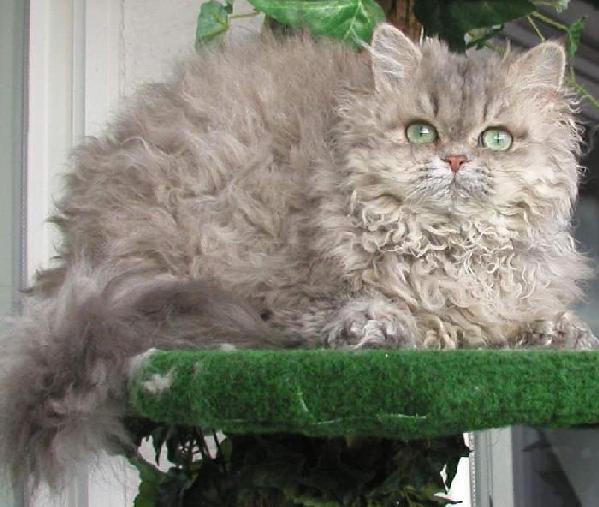


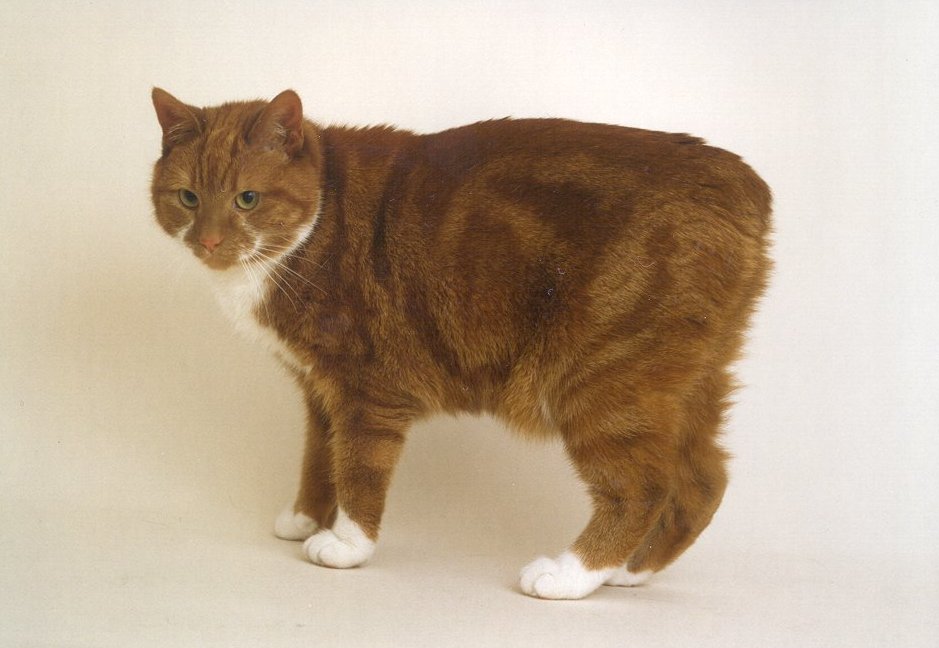
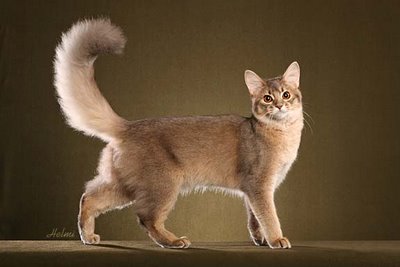
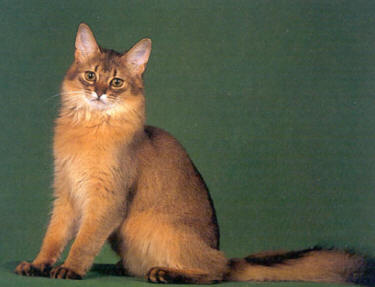


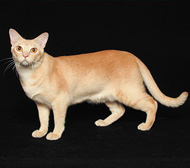
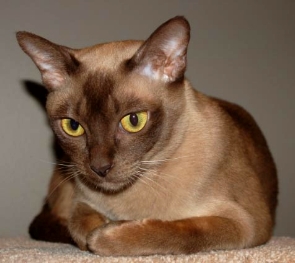

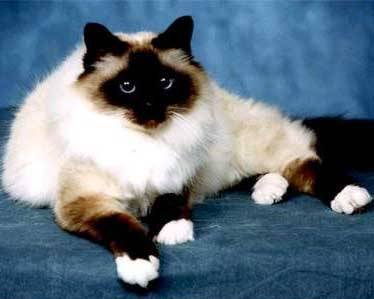

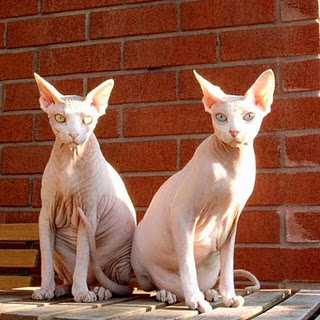

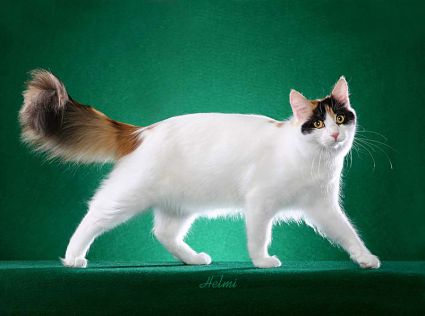


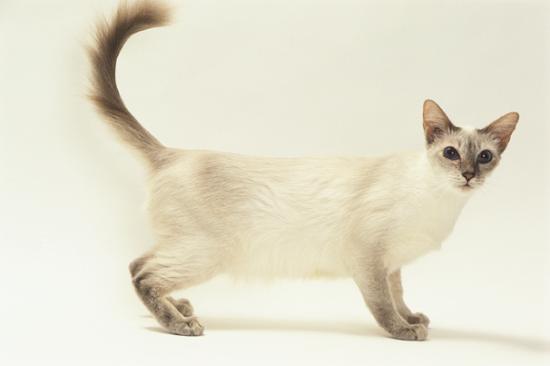
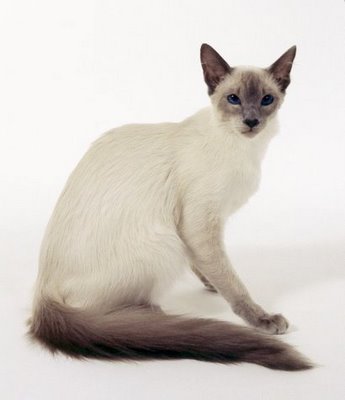
 RSS Feed
RSS Feed